ASIA
Australia
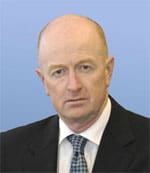
Glenn Stevens
Grade: A
Glenn Stevens, governor of the Reserve Bank of Australia, has a steady hand and clear policy views when it comes to making monetary decisions at the RBA. At its meeting in August, the RBA’s board decided to leave the official cash rate unchanged at 4.75%, a level that has held since November 2010. Stevens says that he is concerned about the medium-term outlook for inflation, but he says that uncertainties in the global economy remove any urgency to raise interest rates. Stevens says the RBA likely will have to raise rates eventually because of Australia’s mining boom, fed by continued strong demand from China. Earlier this year, Stevens looked beyond the impact of the Queensland floods, even as the Australian economy shrank 1.2% in the first quarter from the previous quarter, its biggest contraction in 20 years. The resumption of coal production is continuing, but a full recovery of flood-affected production is unlikely before early next year, the RBA says. Australia’s consumer prices rose more than forecast in the second quarter, as high food and energy costs put pressure on inflation. Meanwhile, the strong Australian dollar is helping to counter inflation.
China

Zhou Xiaochuan
Grade: B
The People’s Bank of China, the country’s central bank, says it will continue tightening monetary policy for the rest of the year to curb inflation. “Domestic inflation expectations remain on the high side,” the central bank said in comments published on its website on August 1. “The foundation work for stabilizing prices is not solid, and there is a chance of prices rebounding once policy is relaxed.” Since October 2010, governor Zhou Xiaochuan has raised interest rates five times and banks’ required reserves nine times. “Stabilizing prices will remain a policy priority,” the central bank stated. “We will continue to implement prudent monetary policy and keep the needed intensity in policies.” The bank noted that it will further improve the renminbi exchange-rate mechanism and let market forces, as well as a basket of currencies, play a bigger role in deciding the Chinese currency’s value. China’s economy expanded at an annual rate of 9.5% in the second quarter. That was a very modest slowdown from 9.7% year-on-year growth in the first quarter.
India

Duvvuri Subbarao
Grade: B-
The Reserve Bank of India raised interest rates by a higher-than-expected 50 basis points to 8% on July 26, its eleventh increase since March 2010. RBI governor Duvvuri Subbarao says the increase was needed because of rising inflation fueled by higher fuel prices and manufacturing costs. Inflation has spread from the food and energy sectors into the broader economy. The government has revised downward its growth estimate for the current fiscal year, ending March 31, 2012, to 8.6% from 9%. The RBI now expects inflation to be about 7% at the end of the fiscal year, instead of 6% as forecast earlier. “We need to restrain inflation in order to ensure that our medium-term growth is sustainable,” Subbarao says. Although there are signs that economic growth is beginning to moderate, there is no evidence of a sharp or broad-based decline, according to the central bank. Monetary policy alone cannot keep economic growth on track. Economists say India needs to step up the sale of stakes in government-owned companies, introduce a nationwide tax structure and open the retail sector more fully to foreign investors.
Indonesia
Darmin Nasution
Grade: B
When Indonesia’s House of Representatives elected Darmin Nasution as the new governor of Bank Indonesia in July 2010, the assumption was that he would be a dove on monetary policy. Nasution has surprised his critics, however, with an evenhanded policy. The central bank raised interest rates a quarter point in February 2011 to 6.75% and has allowed the rupiah to appreciate to provide cheaper prices for imported goods and to combat inflation. Consumer price inflation has receded to within the central bank’s target range, and growth in the economy is expected to exceed 6% this year and next. Inflation could come in lower than expected if the government maintains its fuel subsidies, Bank Indonesia says. The central bank says it will continue to implement a prudential policy mix, with a focus on managing domestic liquidity, capital inflows and exchange-rate appreciation that is in line with strengthening currencies in the Asian region. Standard & Poor’s upgraded Indonesia’s sovereign rating in April to BB+, one notch shy of investment grade.
Malaysia

Zeti Akhtar Aziz
Grade: A
Through sound monetary policy decisions, Zeti Akhtar Aziz, central bank governor of Malaysia, has helped the country’s economic growth to remain strong. Bank Negara raised its benchmark overnight policy rate by a quarter point to 3% in May to prevent rising food and energy prices from becoming embedded in the economy. It also announced an increase in bank reserve requirements to manage a significant buildup of liquidity. Malaysia’s currency, the ringgit, has strengthened significantly over the past year, partly because of foreign capital inflows. Malaysia’s gross domestic product grew at a decade-high rate of 7.2% in 2010, and the central bank forecasts growth of about 6% in 2011. Bank Negara was the first central bank in Asia to raise interest rates last year, with its first increase in four years in March 2010, followed by additional increases in May and June of last year. The monetary policy committee says the stance of monetary policy continues to be accommodative and supportive of economic growth. Zeti, the first woman to head a central bank in Asia, was reappointed in April to another five-year term as governor. She has been a leading advocate for Islamic finance in Malaysia and the region.
Japan
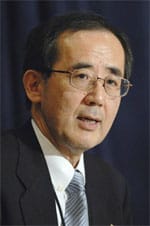
Masaaki Shirakawa
Grade: C
Masaaki Shirakawa, governor of the Bank of Japan, says monetary policy is, by its nature, mainly based on macroeconomic analysis. But in Japan’s case, the central bank also had to take into account the effects of the Great East Japan Earthquake of March 11. While industrial production is beginning to recover, the economy is confronting a new problem, Shirakawa says: uncertainty about the power supply in the long run. Meanwhile, the Bank of Japan intervened in record amounts in the foreign exchange market in August to tamp down a rise in the yen amid worries about a global economic slowdown. The central bank also increased its asset-purchase and lending facility program by 25% to $630 billion. “There is a possibility that developments in overseas economies and the ensuing fluctuations in the foreign exchange and financial markets may have adverse effects on business sentiment and consequently on economic activity in Japan,” the central bank said in a statement. The Bank of Japan has kept its interest rate unchanged at virtually zero for an extended period, but its policies have had little effect on an economy in need of structural reforms.
New Zealand
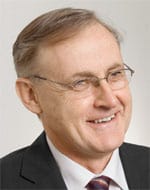
Alan Bollard
Grade: B
The Reserve Bank of New Zealand is not about to engage in an aggressive tightening cycle, but it is considering taking back the 50 basis points of emergency cuts it made in March, following the Christchurch earthquake. Alan Bollard, governor of the central bank, says any increase in rates will depend on a reduction in global financial risks, as well as continued recovery in New Zealand’s export-dependent economy.
The Reserve Bank’s official cash rate was cut to 2.5% from 3% in early March, after the February 22 earthquake that killed nearly 200 people and disrupted regional business activity. The strong New Zealand dollar is hurting exporters, but the central bank is unlikely to intervene to weaken the currency in light of the less-than-successful experience of other central banks in intervening. Bollard says the pace of any interest rate increases will be guided by the speed of New Zealand’s economic recovery.
Singapore
Ravi Menon
Grade: B
Ravi Menon was named in March as managing director of the Monetary Authority of Singapore, the country’s central bank. He was permanent secretary of trade and industry and previously served for 16 years at the MAS, where he became its assistant managing director in 2002. Singapore conducts monetary policy through its exchange rate, controlling moves in the Singapore dollar against an undisclosed basket of currencies.
The MAS moved the currency band upward in April, revaluing the currency by about 1.5% to control inflation. The three-month SIBOR (Singapore Interbank Offered Rate) is less than 0.44%. The low interest rates in Singapore are in contrast with higher rates in the rest of Asia, as central banks have increased rates to combat higher fuel and food prices. The MAS sets its monetary policy twice yearly.
Menon says the Singapore economy should register moderate growth for the rest of this year. “The tight labor market will continue to exert upward pressure on costs and prices, while global oil and food prices are likely to remain firm, given supply shocks and strong demand as the global economy slowly recovers,” the MAS said in its annual report released on July 22.
Philippines
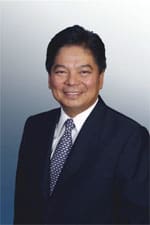
Amando Tetangco Jr.
Grade: A
Amando Tetangco Jr., governor of the Philippine central bank since 2005, was reappointed in January for a second six-year term. The central bank’s monetary board increased interest rates by a quarter point in March and another quarter point in May to keep inflation expectations anchored in the face of rising oil and food prices. Bangko Sentral raised reserve requirements for banks in June and July to mop up excess liquidity in the financial system. The overnight borrowing rate stands at 4.5% and the overnight lending rate is 6.5%. Analysts say the central bank might raise rates further, since the 3%-to-5% inflation target range for 2011 remains at risk.
The International Monetary Fund praised the government of president Benigno Aquino, who took office in June 2010, for the way it has handled the economy, which is expected to grow about 5% this year and in 2012. “The near-term outlook for the Philippines is favorable, characterized by moderating but still rapid growth,” the IMF said in a statement on July 20, following a staff visit to the country.
The Philippines’ financial sector has remained resilient, the IMF said, and the government’s fiscal reforms will raise the necessary revenues to allow for faster growth.
South Korea
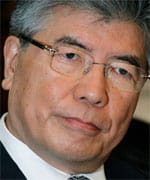
Kim Choongsoo
Grade: C
South Korea’s inflation rate has remained above its 4% target for every month so far this year. The International Monetary Fund in August urged the Bank of Korea to raise rates more aggressively.
Central bank governor Kim Choongsoo raised the seven-day repurchase rate by a quarter point in January, another quarter point in March and a quarter point in June, bringing the rate to 3.25%. The IMF in August urged the Bank of Korea to raise the rate to at least 4% to contain rising inflationary pressures and to allow the won currency to appreciate. This would limit the pass-through of imported prices to consumer inflation. It estimated the won was undervalued by about 10% and that the central bank should intervene less frequently to smooth volatility in the exchange rate.
Choongsoo, who was named governor of South Korea’s central bank in March 2010, said early this year that the bank would continue to raise rates by “baby-step 25-basis-point hikes.” The IMF is hoping for bigger steps.
Taiwan

Fai-Nan Perng
Grade: A
Taiwan’s inflation rate is low and stable compared with that of most other countries, thanks in large part to central bank governor Fai-Nan Perng. He espoused a policy of gradual and steady rate hikes to keep inflation expectations in check. Taiwan’s central bank raised its discount rate by 12.5 basis points to 1.875% at its June 30 meeting to ease possible inflationary pressure in the second half of the year, when typhoons are likely to cause food prices to rise. The government is forecasting 2011 inflation of 2.1%. Appreciation of the New Taiwan dollar has helped to ease inflation caused by rising global prices for imported industrial inputs and food. Economists expect interest rates to continue to increase at a controlled pace, although uncertainties in the global economy will prevent aggressive tightening. Taiwan’s gross domestic product rose at a 10.9% annual rate in 2010 and is expected to expand by slightly more than 5% this year. The country’s economy has become more closely linked with China under Taiwanese president Ma Ying-jeou, who is running for reelection in January 2012.
Thailand
Prasarn Trairatvorakul
Grade: B+
Thailand’s economy has been resilient to the oil price shock, natural disasters and political uncertainties. The Bank of Thailand is more concerned with fighting inflation than in promoting growth. Exports remain robust, and both consumption and investment are supporting the domestic economy. Thailand’s new prime minister, Yingluck Shinawatra, took office on August 8, vowing to bring unity to the country after years of political unrest. During the election campaign, the victorious Puea Thai Party promised to raise wages, cut the corporate tax rate and give 800,000 tablet computers to school children each year. The central bank raised its benchmark interest rate a quarter point to 3.25% on July 13, its sixth increase of the year amid rising core inflation. Prasarn Trairatvorakul, governor of the Bank of Thailand, warned on August 4 that an additional rate hike was necessary to keep inflation within the bank’s 0.5%-to-3% target range. “How quickly and how high the interest rate will be raised depends on inflation acceleration,” he says. The BoT said economic growth in Asia could slow slightly due to tightened monetary policy in many countries.
|
|
||




